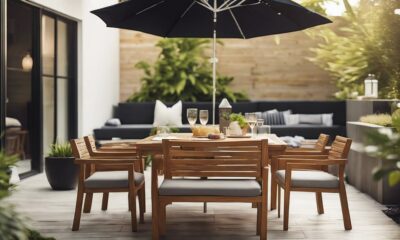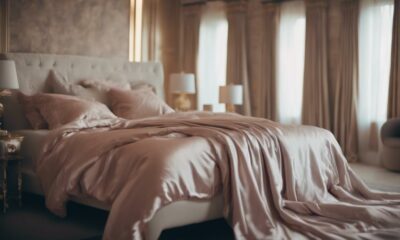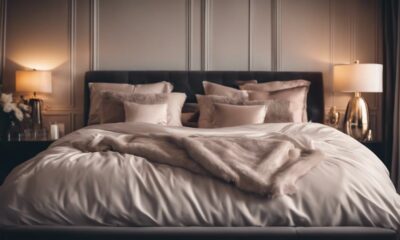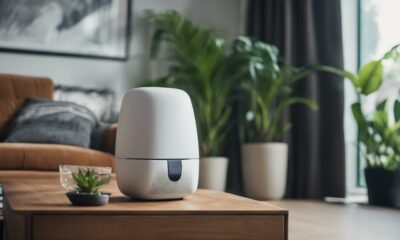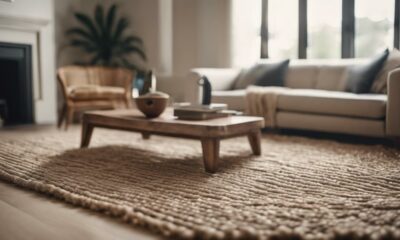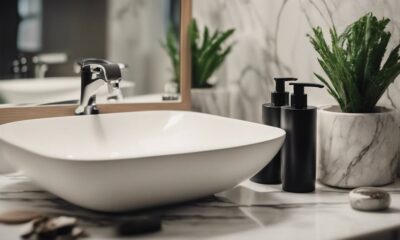Home Decor
What Is Interior Decorating
Dive into the world of interior decorating to discover how colors, furniture, and design come together to transform living spaces.
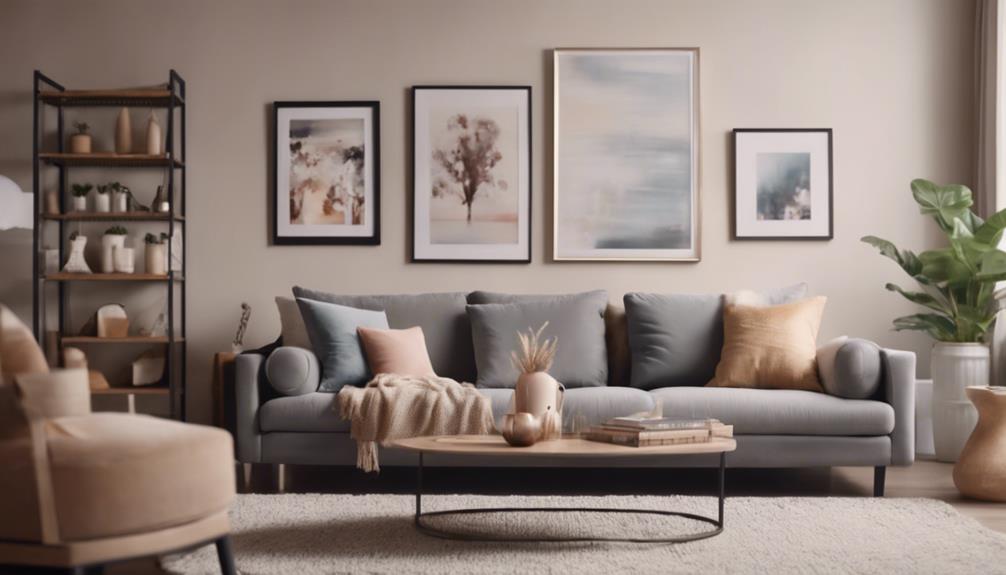
Interior decorating is about enhancing indoor spaces by carefully choosing colors, furniture, and accessories to create cohesive, visually appealing environments. We focus on transforming rooms into aesthetically pleasing and functional spaces, considering elements like color schemes, furniture selection, and overall design coherence. Interior decorators work closely with clients to bring their unique visions to life and improve the aesthetics and comfort of their spaces. By utilizing strategic color choices, textures, and functional design principles, interior decorating plays an important role in shaping the ambiance of a home and increasing its value. Want to explore more about this compelling field?
Key Takeaways
- Enhancing visual appeal of spaces using color, texture, and furniture.
- Transforming rooms into cohesive and aesthetically pleasing environments.
- Collaborating with clients and architects to achieve desired design visions.
- Focusing on aesthetics by carefully selecting furniture and accessories.
- Playing the role of a personal stylist to create unique and stylish spaces.
Definition of Interior Decorating
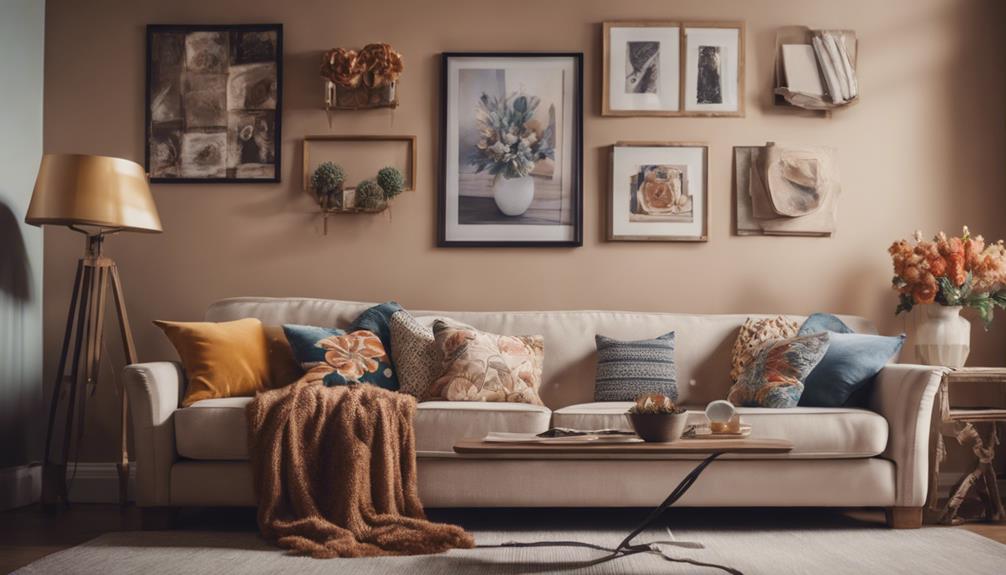
In interior decorating, our aim is to enhance the visual appeal of spaces through thoughtful color schemes, furniture selection, and accessories. We endeavor to create an ambiance that's aesthetically pleasing and harmonious to the eye.
By working with existing architectural features and elements, we seek to transform spaces into cohesive and inviting environments. Our goal is to improve the overall visual aesthetics of a room, making it more appealing and comfortable for its inhabitants.
As interior decorators, we act as personal stylists for spaces, using paint, fabric, furniture, and decor to elevate the look and feel of a room. While we don't typically address structural changes or architectural modifications, our primary focus lies in the decorative aspects of a space.
Through careful consideration of color palettes, furniture arrangements, and accessory placement, we aim to enhance the beauty and functionality of interiors.
Core Elements of Interior Decorating
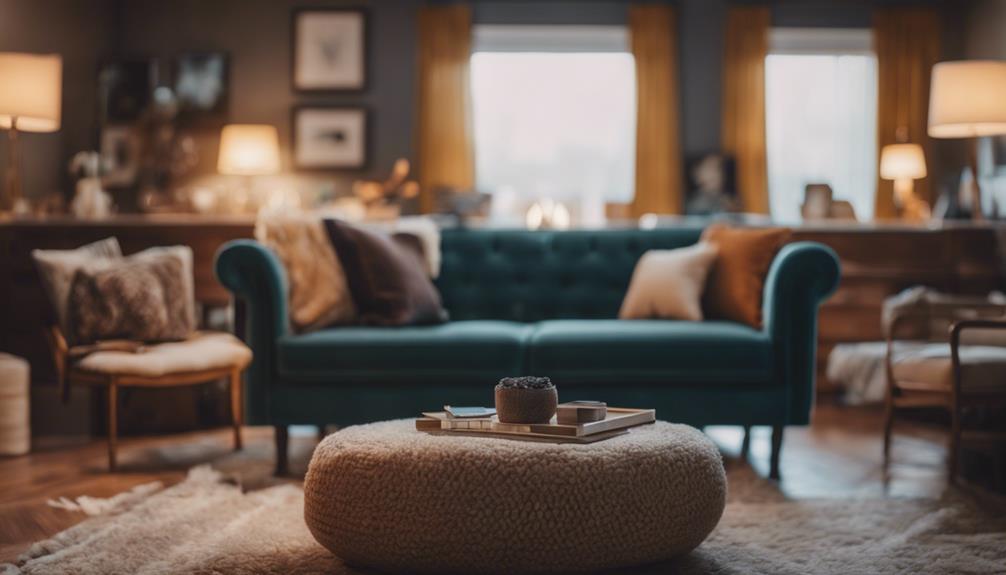
Building upon our understanding of interior decorating as a means to enhance visual appeal, we now explore the core elements that form the foundation of this creative practice. Interior decorating focuses on enhancing aesthetics through careful furniture selection, coordinating color schemes, and thoughtfully chosen accessories. The primary goal is to improve the visual appeal of existing spaces and create a desired ambiance. Decorators work closely with clients, homeowners, Realtors, or architects to transform spaces into inviting and aesthetically pleasing environments.
While formal education or certifications can be beneficial for interior decorators, they aren't mandatory to practice in the field. However, acquiring knowledge through courses or programs can enhance skills in areas such as design principles, color theory, space planning, and project management. By mastering these core elements, decorators can effectively communicate their vision and bring their creative ideas to life in various interior spaces.
Role of an Interior Decorator
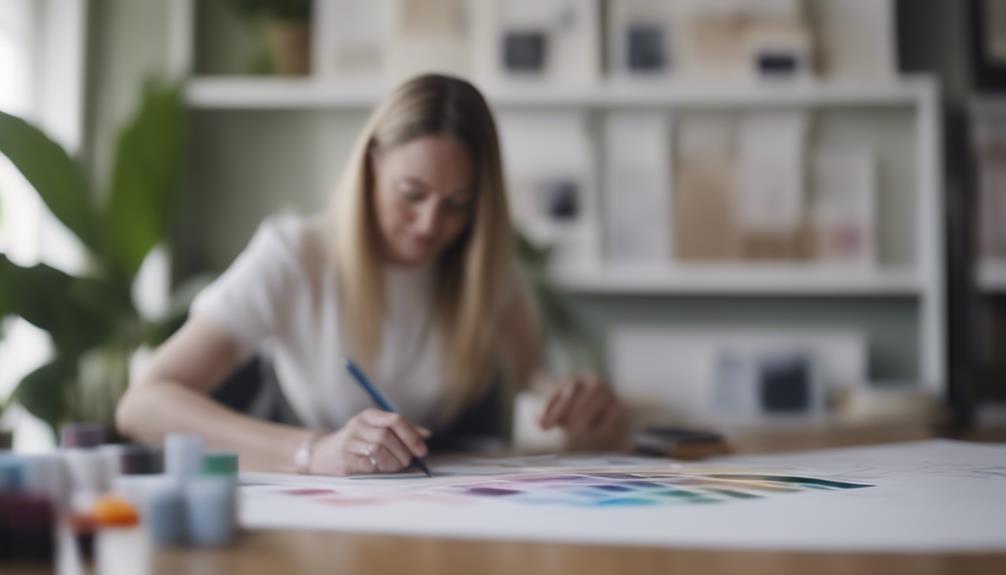
An interior decorator plays a crucial role as a personal stylist for spaces, focusing on creating an ambiance that aligns with the client's preferences. They're responsible for transforming spaces to enhance visual appeal through elements like paint and fabric selection, furniture arrangement, and accessory placement.
Working closely with homeowners, Realtors, or architects, interior decorators aim to improve the aesthetics of existing spaces while considering the client's unique style and vision. While formal education isn't always required, participation in certification programs, such as those offered by C.I.D, can enhance an interior decorator's skills in areas like color selection and furniture layouts. These programs provide valuable knowledge and techniques for aesthetic improvement and effective space transformation.
Importance of Color and Texture
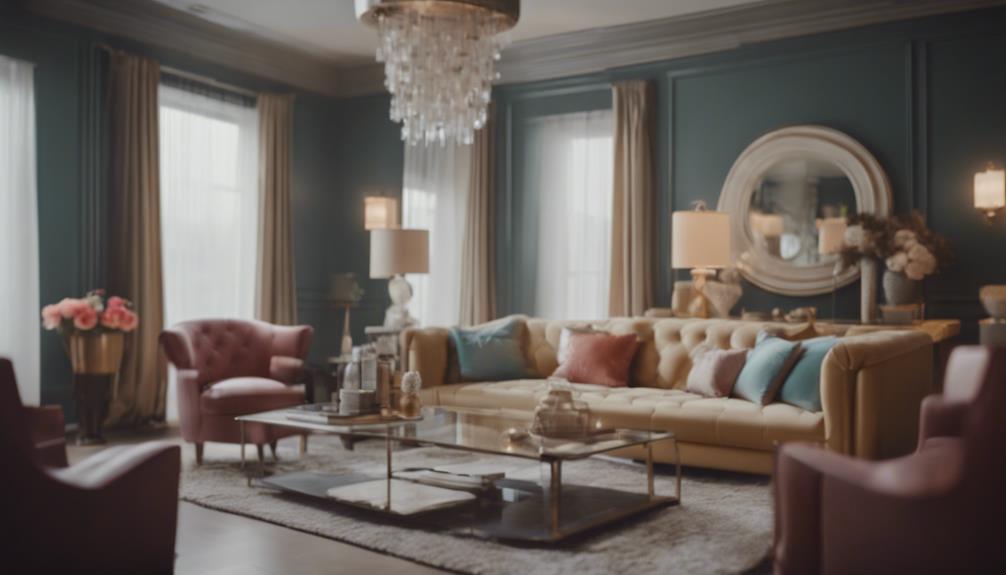
Enhancing visual appeal in interior decorating often hinges on the strategic use of color and texture to create ambiance and depth within a space. Color is a powerful tool that can set the mood and ambiance of a room. By carefully selecting hues, you can evoke specific emotions and enhance the overall aesthetic.
Texture, on the other hand, adds dimension and tactile appeal, making a room visually intriguing. Mixing different textures can add richness and complexity to the design, elevating the space to a new level of sophistication.
When considering color and texture in interior decorating, it's essential to pay attention to the details. The right color combinations can transform a space, while incorporating various textures can enhance its visual interest. By combining colors and textures thoughtfully, you can create a harmonious environment that not only looks beautiful but also feels inviting and engaging. Remember, the devil is in the details when it comes to color and texture in interior decorating.
Creating Functional Spaces
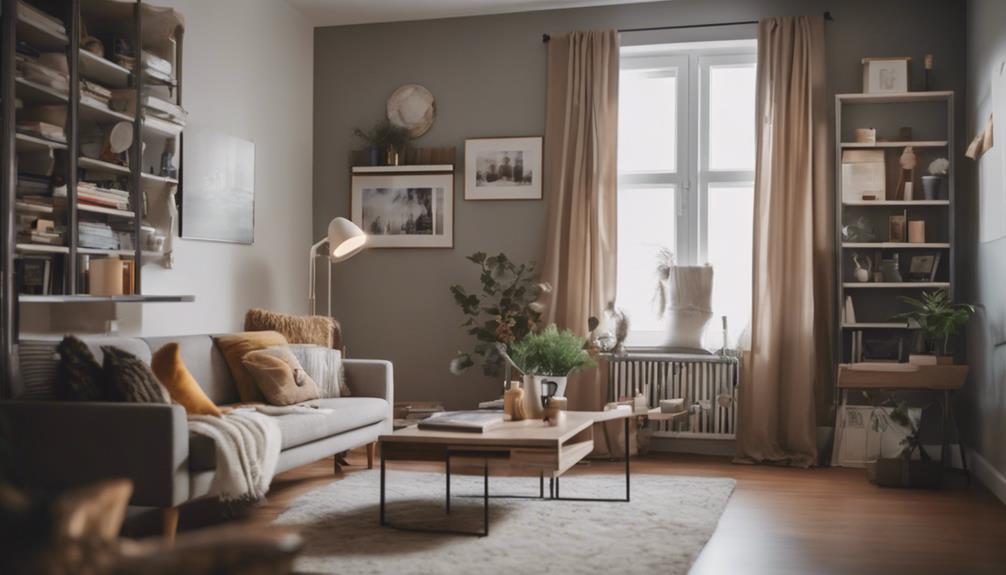
When it comes to creating functional spaces, we need to take into account various factors such as space utilization tips, furniture arrangement techniques, and color and lighting choices.
These elements play an important role in ensuring that a room isn't only visually appealing but also practical and comfortable for everyday use.
Space Utilization Tips
In interior decorating, optimizing space functionality involves strategic furniture arrangement, considering traffic flow, and incorporating storage solutions. When aiming to create functional spaces, keep these tips in mind:
- Use multifunctional furniture like storage ottomans or convertible sofas.
- Employ proper lighting techniques such as layered lighting and task lighting.
- Place decor elements strategically to enhance space utilization.
- Consider traffic flow when arranging furniture to guarantee easy movement.
- Opt for storage solutions that blend seamlessly with the overall design.
These guidelines will help decorators maximize the usability of a room while maintaining a visually appealing and harmonious design.
Furniture Arrangement Techniques
To optimize the functionality and aesthetics of a space, strategic furniture arrangement techniques play a pivotal role in interior decorating. By considering factors like traffic flow, usability, and creating aesthetically pleasing layouts, one can transform a room into a harmonious environment.
Balancing furniture sizes, shapes, and styles is essential to achieve a visually appealing arrangement that promotes a sense of balance. Utilizing focal points such as a fireplace or a large window can guide furniture placement and enhance the overall room composition.
Understanding the scale and proportion of furniture in relation to the room size is vital for creating a well-balanced and functional space that maximizes both usability and visual appeal.
Color and Lighting Choices
Considering the impact of color and lighting choices is paramount when creating functional spaces through interior decorating. Proper understanding of color psychology and lighting principles is essential for optimizing the functionality and aesthetic appeal of interior spaces.
Here are five key points to remember:
- Color choices in interior decorating can greatly influence mood, perception, and the overall ambiance of a room.
- Lighting selections play a vital role in enhancing functionality, highlighting design elements, and creating specific atmospheres.
- Effective color and lighting decisions can transform a space and improve the overall experience for occupants.
- Proper color and lighting choices can optimize the functionality and aesthetic appeal of a room.
- Understanding color psychology and lighting principles is crucial for creating visually pleasing interior spaces.
Collaboration With Clients

Working closely with clients, interior decorators aim to understand their preferences, style, and vision for the space. This collaboration involves selecting color schemes, furniture, fabrics, and accessories that align with the client's aesthetic goals. Open communication and feedback sessions are crucial as decorators work diligently to meet the client's needs and desires throughout the design process. By engaging in these collaborative discussions, decorators can tailor the design to reflect the client's personality, lifestyle, and functional requirements.
Ultimately, the goal is to create personalized and customized spaces that resonate with the client's tastes and preferences. This collaborative approach allows for a more intimate and unique design process, where the client's vision is at the forefront of every decision made. Interior decorators work hand in hand with clients to bring their dream spaces to life, ensuring that every detail reflects their individual style and vision.
Trends in Interior Decorating
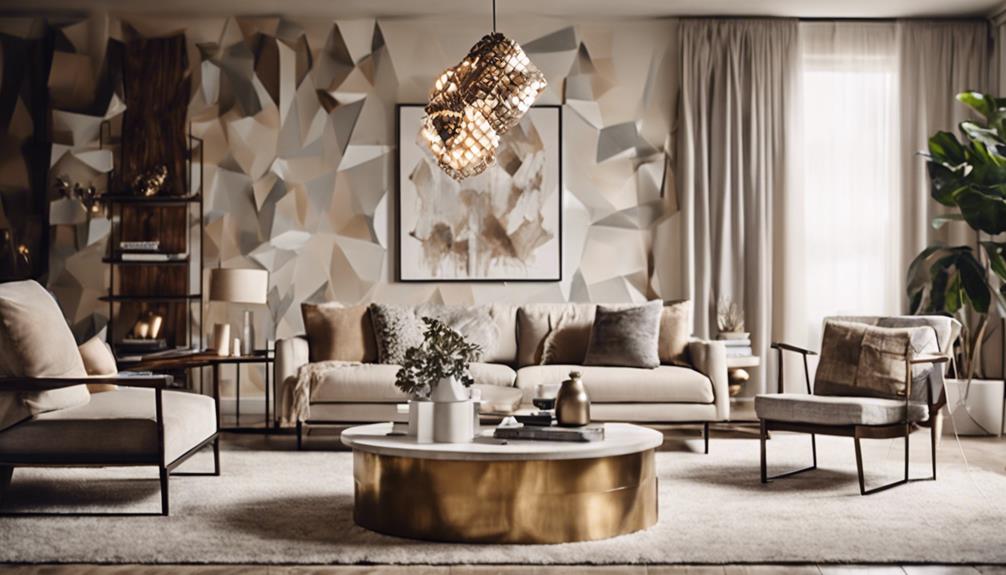
Incorporating sustainable and eco-friendly materials is a prevalent trend in modern interior decorating. When following the latest interior decorating trends, consider embracing minimalistic design concepts that feature clean lines and clutter-free spaces.
To add depth and visual interest to your living spaces, mix different textures like wood, metal, and textiles. Bold and vibrant colors are making a comeback in interior decorating, injecting personality and energy into rooms.
Additionally, integrating elements of biophilic design, such as indoor plants and natural light, is an emerging trend aimed at enhancing well-being. By staying up to date with these modern trends, you can create stylish and environmentally conscious interiors that promote a sense of harmony and balance within your home.
Impact on Home Value
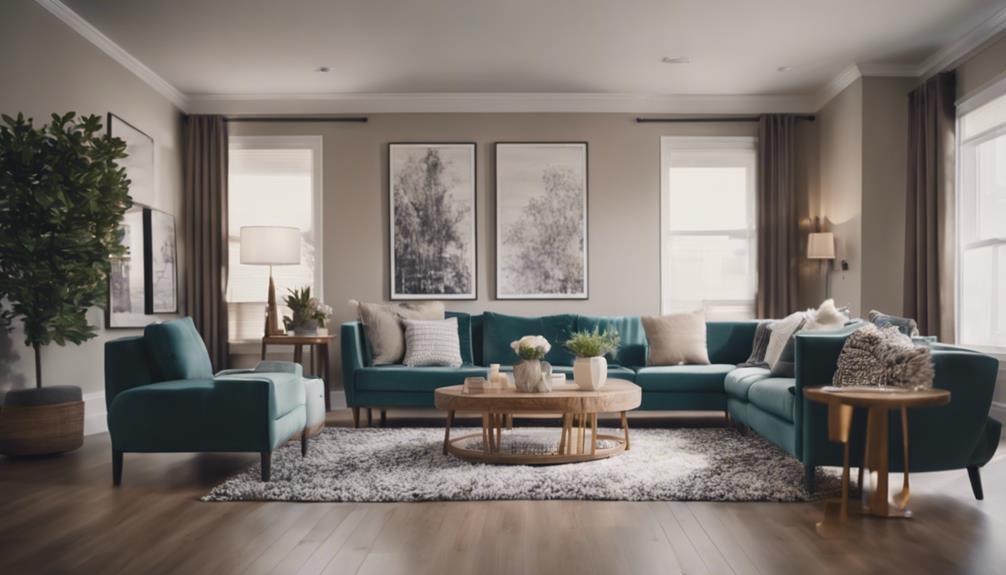
Strategic interior decorating choices can greatly impact the perceived value of a home, potentially increasing it by up to 10%. When considering interior decorating's influence on home value, factors such as strategic color choices, furniture arrangements, and professional staging play vital roles. These elements not only enhance the property's aesthetic appeal but also shape potential buyers' perception of the space. Creating an emotional connection through a well-designed interior can notably impact the offers received, leading to a quicker sale at a higher price point.
| Key Aspects of Interior Decorating | Impact on Home Value |
|---|---|
| Strategic Color Choices | Enhances Perceived Value |
| Furniture Arrangements | Shapes Property Perception |
| Professional Staging | Increases Buyer Interest |
Investing in quality interior decorating not only improves the overall ambiance of a home but also offers a high return on investment when selling. By understanding the impact of interior decorating on home value, homeowners can make informed decisions to maximize their property's potential.
Frequently Asked Questions
What Is the Meaning of Interior Decorating?
Interior decorating refers to enhancing the visual appeal of spaces using furniture, color schemes, and accessories. It involves creating a pleasing ambiance within existing spaces without altering the structure.
The primary goal is to improve the aesthetics and feel of a room. Decorators collaborate with clients to understand their preferences and style choices, resulting in personalized interiors.
This process typically excludes exterior elements and architectural changes to the space.
What Does Interior Decorating Include?
Interior decorating involves selecting color schemes, furniture, and accessories to enhance the visual appeal of a space. Decorators focus on creating a cohesive ambiance aligned with the client's style. This process involves using paint, fabric, furniture, and decorative elements to beautify existing spaces.
Collaborating with homeowners, Realtors, or architects is essential to achieve the desired aesthetic outcome. Unlike interior design, interior decorating primarily focuses on visual aesthetics and creating a welcoming atmosphere.
What's the Difference Between Interior Design and Interior Decorating?
When comparing interior design and interior decorating, it's crucial to recognize that interior design involves more technical aspects like space planning and structural changes, while interior decorating focuses on aesthetics through color, furniture, and accessories.
Designers often work on the layout and functionality of spaces, while decorators enhance the visual appeal. Understanding this distinction helps clients choose the right professionals based on their specific needs and goals.
How Does Interior Decorating Work?
Interior decorating works by strategically combining elements like color schemes, furniture, and accessories to enhance the visual appeal of a space. Decorators focus on creating a specific ambiance that matches the client's preferences. They collaborate with homeowners, Realtors, or architects to bring design visions to life.
While formal education isn't always required, certifications from organizations like C.I.D can boost credibility and skills. This process involves transforming spaces using paint, fabric, furniture, and accessories.
Conclusion
To sum up, interior decorating is the art of transforming spaces through color, texture, and functionality.
By collaborating with clients and staying updated on trends, interior decorators enhance the value and appeal of homes.
Through the skillful use of design elements, they create visually stunning and practical environments.
Whether it's a modern living room or a cozy bedroom, interior decorating plays a vital role in shaping the ambiance and overall feel of a space.
Interior
Does Replacing Windows Damage Interior Walls
Tread carefully when replacing windows to avoid potential damage to your interior walls – learn how to protect your home!
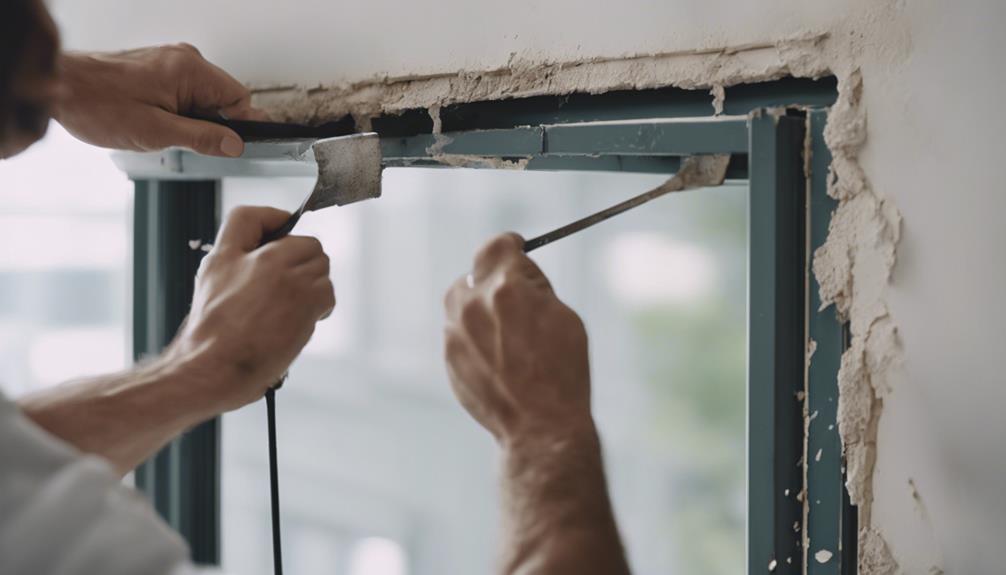
When replacing windows, it is crucial to proceed with caution! Incorrect installation can result in damage to interior walls, such as weakened structure, water damage, mold, and drafts. Improper measurements can lead to gaps that cause drafts and leaks. Improper removal of windows may cause cracks, dents, or debris on walls. Careful installation is essential for wall protection. Look out for signs like cracks or discoloration and seek professional help to prevent issues. Ensure proper sealing to avoid damage. For more information on safeguarding your walls during window replacement, continue exploring the potential risks and ways to minimize them!
Key Takeaways
- Improper removal can cause cracks, dents, or scratches on interior walls.
- Dust and debris from removal can settle on walls, causing damage.
- Vibrations during removal may lead to peeling paint or wallpaper.
- Careful installation is crucial to protect wall integrity and aesthetics.
- Signs of wall damage include cracks, chips, discoloration, or bulges.
Potential Risks During Window Replacement
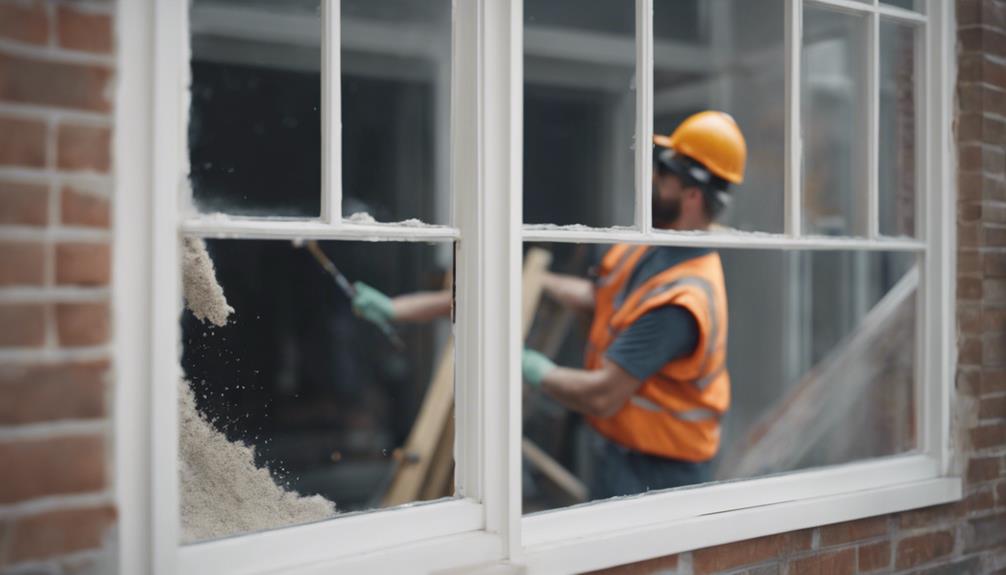
During window replacement, improper procedures can pose significant risks to the structural integrity of your interior walls. When replacing windows, it's important to be mindful of the potential dangers that could arise.
One major risk is the possibility of damaging your interior walls during the installation process. Cutting into walls or removing structural support incorrectly can weaken the overall stability of your walls. Additionally, if proper sealing and insulation measures aren't taken, your walls may be vulnerable to leaks. This can lead to water damage, mold growth, and decreased energy efficiency.
Furthermore, gaps and drafts resulting from inadequate sealing can increase the risk of air infiltration, causing discomfort and higher energy bills. It's essential to make sure that the new windows are installed correctly to prevent any harm to your interior walls and maintain a safe and efficient home environment.
Impact of Incorrect Measurements

Incorrect measurements during window replacement can have detrimental effects on the overall integrity and efficiency of the installation. When the opening size doesn't match the window frame due to inaccurate measurements, gaps can form. These gaps can lead to issues such as drafts, energy loss, and even water leakage, potentially damaging your interior walls.
Additionally, improperly sized windows can compromise the structural integrity of the wall, affecting the stability of the entire setup.
To prevent these problems, it's vital to guarantee accurate measurements before replacing your windows. Accurate measurements ensure a secure fit, proper alignment, and protection against damage to your interior walls. Hiring experienced professionals like Utah Window Experts can help you avoid the consequences of inaccurate measurements during window replacement.
Consequences of Improper Removal
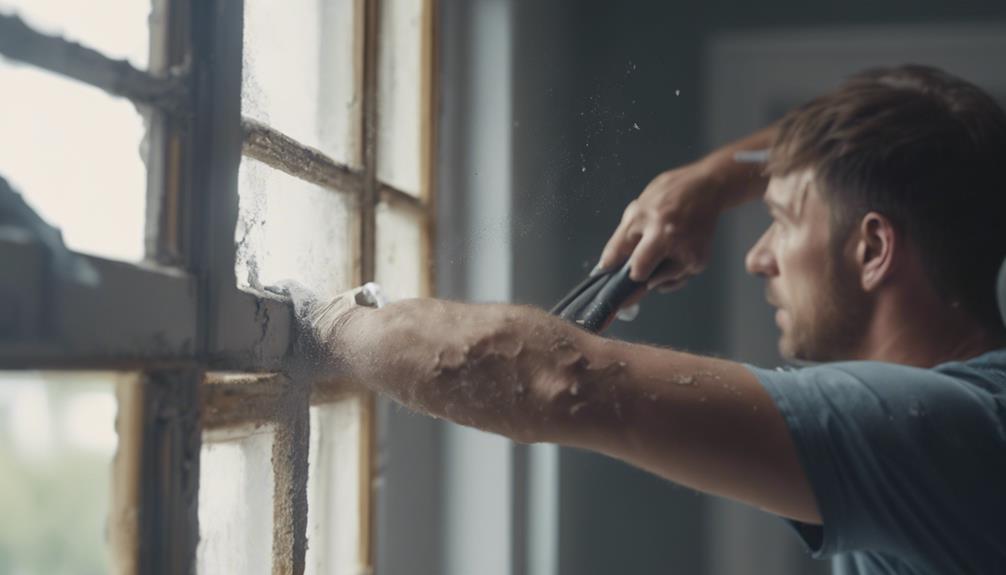
Improper removal of windows can result in various damages to your interior walls. When windows aren't removed carefully, it can cause cracks, dents, or scratches on your walls.
If the removal process lacks adequate support, it may lead to structural damage like weakening of the walls or displacement of the studs.
Additionally, the dust and debris generated during window removal can settle on your walls, necessitating extra cleaning and maintenance efforts. Vibrations and hammering can potentially cause your wall paint or wallpaper to peel off, further adding to the damage.
Improper handling of old windows can also result in harm to surrounding wall surfaces such as drywall or plaster. To avoid these consequences, it's important to make sure that windows are removed with care and precision to protect the integrity of your interior walls and maintain the aesthetics of your living space.
Importance of Careful Installation
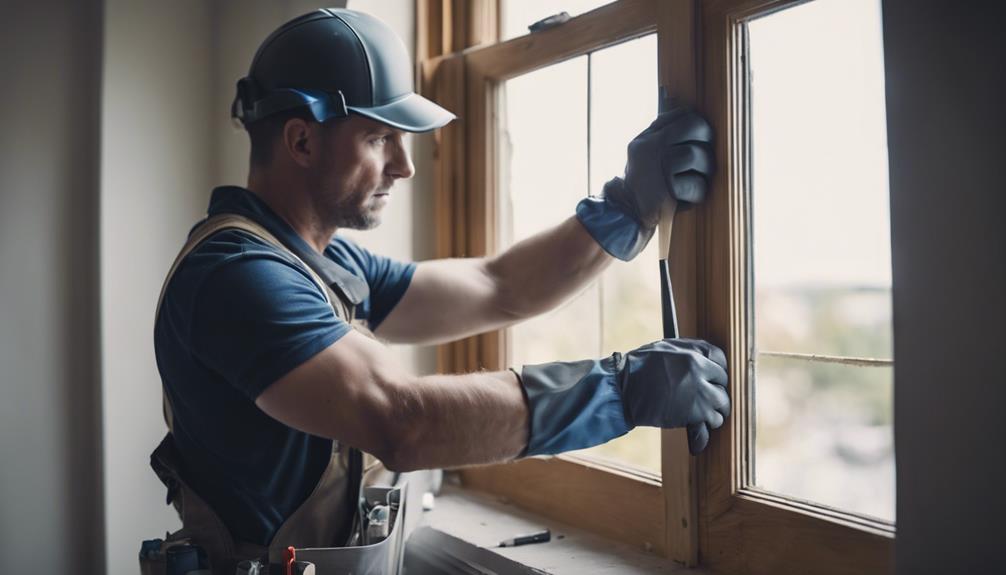
When replacing windows, remember that proper sealing techniques and wall protection methods are essential.
Ensuring a secure fit and using insulation can safeguard your interior walls.
Professional installation experts prioritize these steps to minimize any potential damage during the process.
Proper Sealing Techniques
To safeguard the integrity of your interior walls during window replacement, prioritize employing meticulous sealing techniques. Proper sealing plays an essential role in preventing damage and maintaining the structural soundness of your walls. Here are some key points to keep in mind:
- Seal all gaps and joints thoroughly to prevent air infiltration and moisture damage.
- Utilize quality sealing materials such as silicone or mastic for long-lasting protection.
- Hiring professional installers who are skilled in precise sealing methods can guarantee the job is done correctly and your walls remain intact.
Wall Protection Methods
To guarantee the protection of your interior walls during window replacement, it is essential to prioritize careful installation methods.
When installing new windows, make sure that professional installers handle tools like reciprocator saws and cutters with caution to prevent any damage to your walls.
Two-stage weatherproofing methods are vital for maintaining the integrity of your interior walls during the installation process. Utilizing expansion foam and aluminum capping can provide an extra layer of protection against potential damage.
By hiring skilled professionals, you can rest assured that your windows will be fitted precisely, minimizing the risk of any harm to your interior walls.
Signs of Wall Damage
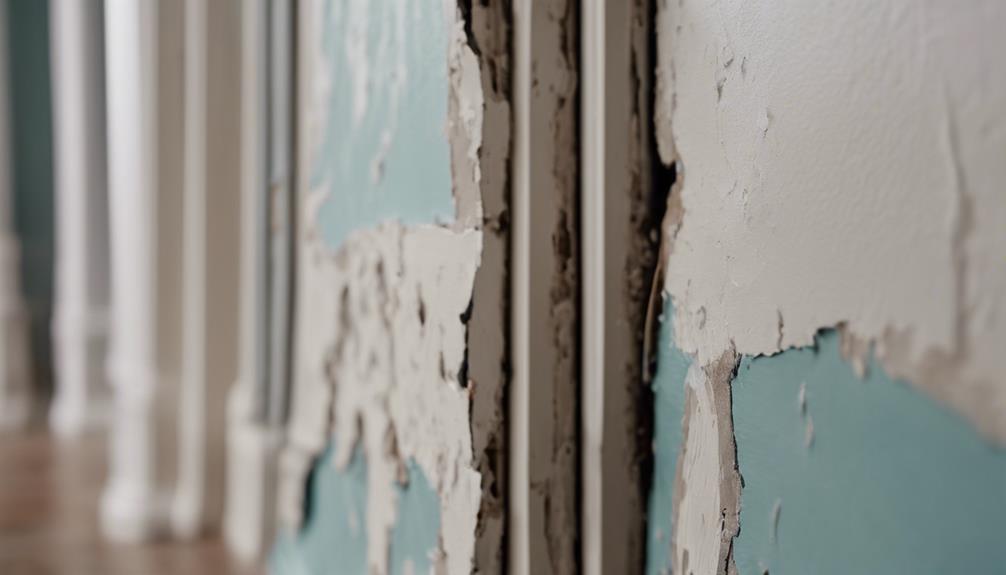
If you notice cracks, chips, or dents in your interior walls, these could be clear signs of damage that occurred during window replacement. Such wall damage might result from improper window installation or structural issues. Signs of wall damage to watch out for include:
- Discoloration, peeling paint, or wallpaper damage
- Uneven surfaces, bulges, or gaps in the walls
- Water stains, dampness, or mold growth
These indicators can point to issues caused by window replacement procedures. Keep an eye out for any warped or misaligned windows, as they may also suggest underlying structural problems or damage to your interior walls during the replacement process.
Minimizing Risks Through Proper Procedures

When safeguarding the integrity of your interior walls during window replacement, proper procedures play a significant role in minimizing risks. Professional installers are trained to take precautions to avoid potential damage to your walls. They understand the importance of protecting your home during the window replacement process. Fragile items should be moved away from the work area to prevent any accidents. Additionally, covering furniture and floors can help shield them from dust and debris that may arise during the installation.
To minimize risks, professional installers also implement precautions to contain inconveniences like vibrations, noise, and dust that can occur when replacing windows. By following these procedures, you can help safeguard your interior walls and ensure a smooth window replacement process. Remember, working with experienced professionals who prioritize these precautions can make a significant difference in maintaining the condition of your home while upgrading your windows.
Frequently Asked Questions
Does Installing New Windows Damage Walls?
When you install new windows, the chances of damaging your walls are low if you hire professionals. They take precautions to protect your interior walls during the process.
It's a good idea to move fragile items away from the work area and cover furniture to prevent dust and debris. Trust in proper containment measures to minimize disruptions caused by the installation.
Hiring experts guarantees a smooth window replacement with minimal impact on your walls.
Does Replacing Windows Damage Interior Trim?
When replacing windows, interior trim can be at risk of damage. The process involves tools like reciprocator saws, which may inadvertently harm the trim. Professionals take care to reduce such risks, especially with delicate trims.
Inspecting the trim before and after the replacement is vital to catch any damage early. Remember, handling fragile trim with care is key to preventing breakage or dents.
Be vigilant and address any issues promptly for a smooth window replacement experience.
Does Window Replacement Damage Drywall?
When replacing windows, potential damage to drywall is minimal. Professional installers take care to minimize harm to interior walls by using precautions such as moving fragile items away from the work area. Furniture and floors can be covered to protect against dust and debris.
Precautions like containing noise, dust, and vibrations are taken during the process. Overall, window replacement can be done with care to avoid significant damage to drywall.
Can You Replace Windows Without Removing Interior Trim?
You can indeed replace windows without removing interior trim by opting for retrofit or insert replacement windows. Retrofit windows fit snugly into the existing frame, keeping your trim intact.
Insert replacement windows are installed within the current frame, leaving your interior trim undisturbed. This approach saves both time and money compared to full frame replacements.
Consult a professional installer to find the best window replacement option for your home's interior.
Conclusion
To sum up, replacing windows can potentially damage interior walls if not done carefully.
For instance, a family in a rush to finish a DIY project ended up damaging their walls due to improper removal of the old windows.
By taking accurate measurements, removing old windows correctly, and ensuring careful installation, you can minimize the risks of damaging your walls during window replacement.
Remember, a little extra care and attention can save you from costly repairs in the long run.
Home Decor
What Is Popular in Home Decor
Fusing retro charm with modern flair, discover the captivating trends shaping today's home decor scene.
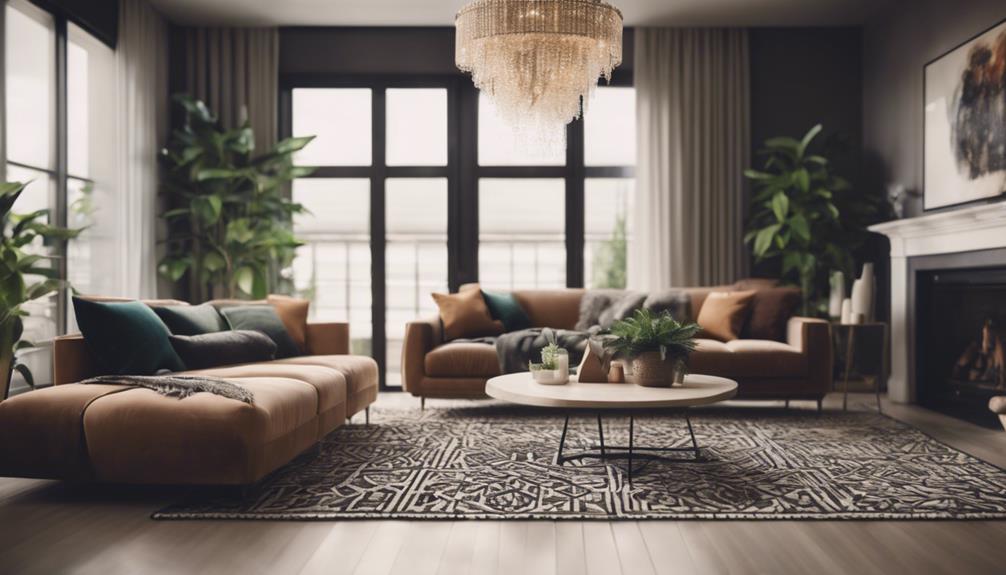
In today’s home decor trends, a blend of vintage charm with contemporary style is gaining popularity and is bound to impress and inspire. Textured elements are making a strong comeback, adding depth and warmth to spaces, along with cozy knit throws and natural fiber rugs. Bold wall murals bring drama and personality, while luxurious neutral textures create a warm and inviting atmosphere. Sculptural pendants and statement lighting fixtures offer stylish illumination. Curved cabinetry, glass bricks, burled wood accents, and Zellige tiles are also in the limelight, bringing elegance and sophistication to interiors. For more information on the latest home decor trends, click here.
Key Takeaways
- Retro and modern fusion for a unique look.
- Textured elements like wall accents and cozy throws.
- Bold wall murals with vibrant colors.
- Luscious neutral textures for warmth.
- Sculptural pendants and statement lighting.
Retro and Modern Fusion
The Retro and Modern Fusion trend in home decor blends vintage elements with contemporary design to create a unique and eclectic look. This style combines nostalgic pieces such as 70s furniture, retro color schemes, and vintage accessories with modern spaces. By integrating retro and modern styles, individuals can craft personalized interiors that exude character and reflect their unique tastes. Elements like bold marble accents, chrome hardware, and oversized accessories serve as bridges between old and new aesthetics, adding depth and visual interest to the decor.
Embracing the retro and modern fusion trend allows for the creation of dynamic and visually engaging home decor styles that blend the charm of the past with the sophistication of the present. This approach offers an opportunity to infuse spaces with a mix of history and contemporary flair, resulting in interiors that are both inviting and stylish. Whether incorporating retro furniture pieces into a modern setting or blending vintage accessories with sleek contemporary design, the retro and modern fusion trend provides a platform for creativity and self-expression in home decor.
Textured Elements Revival
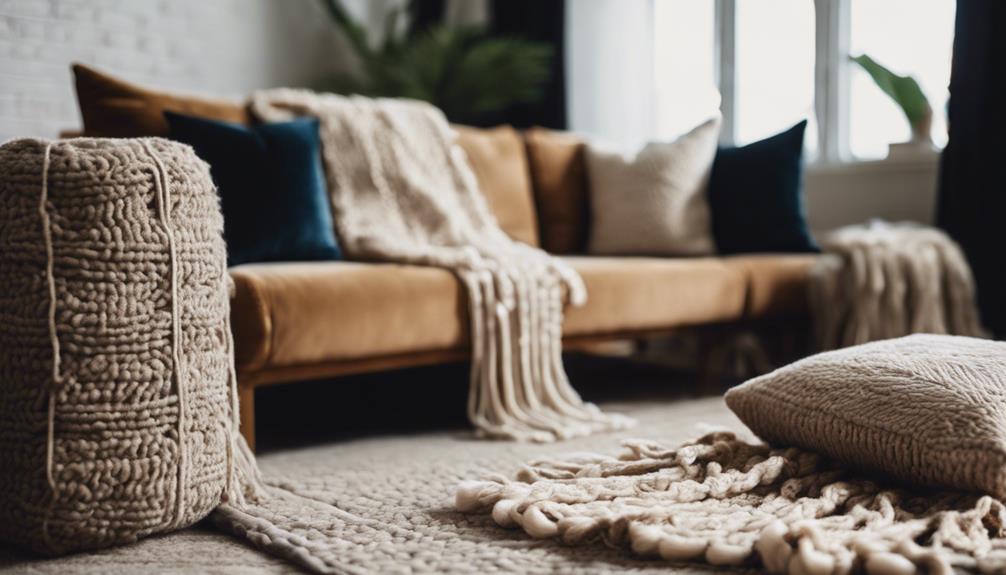
Textured elements like wall accents, cozy knit throws, and natural fiber rugs are making a comeback in home decor. These elements add a sense of coziness and visual interest to a room, making it feel more inviting and warm.
Textured Wall Accents
Experiencing a resurgence in popularity, textured wall accents bring depth and warmth to modern interior design trends. These elements not only hide imperfections on walls but also create a polished and sophisticated look, enhancing the aesthetic appeal of a room. By providing visual interest and a tactile experience, textured wall accents help divert attention from structural limitations, making the space more visually appealing. Incorporating decorative texture on walls is a popular way to elevate the design and create a unique focal point in a room. To illustrate the benefits of textured wall accents, consider the following comparison table:
| Benefits of Textured Wall Accents |
|---|
| Adds depth and warmth to spaces |
| Hides wall imperfections |
| Enhances aesthetic appeal |
| Creates visual interest |
| Diverts attention from limitations |
Cozy Knit Throws
Amidst the current trends in home decor, a resurgence can be observed in the popularity of cozy knit throws as textured elements. These versatile throws not only add warmth but also introduce a tactile dimension to living spaces.
Available in a variety of colors, patterns, and sizes, cozy knit throws cater to a range of decor styles. Whether draped over sofas, chairs, or beds, they effortlessly enhance comfort and visual appeal.
Incorporating these textured elements into your home decor is an easy way to infuse a touch of warmth and charm into any room. With their cozy vibes and aesthetic versatility, cozy knit throws have become a favored choice for those looking to add both style and comfort to their living spaces.
Natural Fiber Rugs
As we explore the world of home decor trends, the allure of natural fiber rugs emerges as a prominent choice for adding texture and warmth to living spaces.
Natural fiber rugs, such as jute and sisal, are sustainable options that appeal to the growing interest in eco-friendly materials. These rugs come in various weaves and patterns, offering versatility in design choices. Known for their durability and easy maintenance, natural fiber rugs are ideal for high-traffic areas.
They complement a range of decor styles, from bohemian to coastal, adding a touch of organic charm to rooms. Embracing these textured elements not only enhances the aesthetic appeal of a space but also contributes to a more sustainable and nature-inspired home decor approach.
Bold Wall Murals
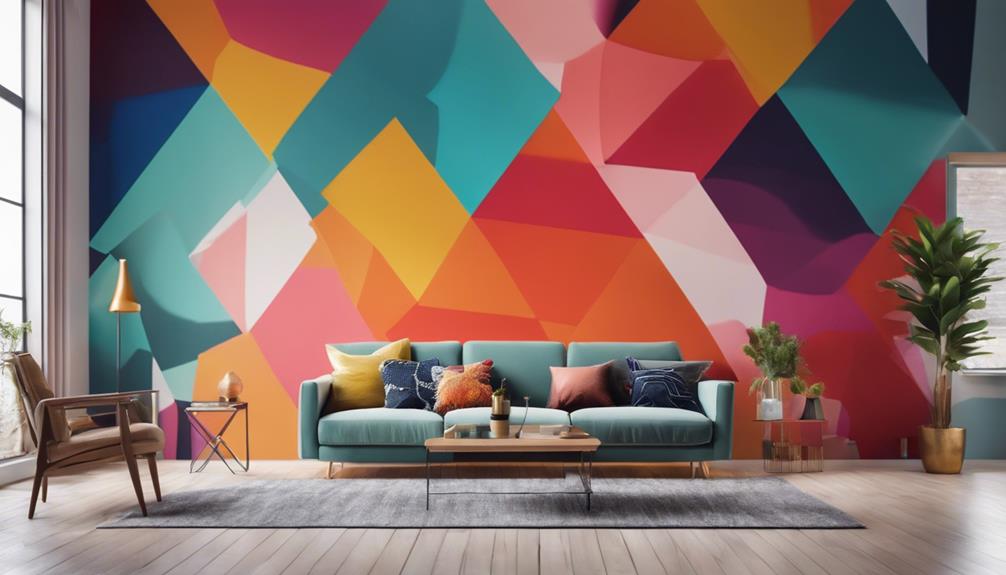
Bold wall murals are an impactful trend in home decor, featuring large-scale patterns and vibrant color choices that create a striking focal point.
These decorative pieces allow for personal expression through dramatic designs, making a bold statement in any room.
Large-Scale Patterns
Large-scale patterns in home decor, particularly bold wall murals, have become a defining element of contemporary interior design. These striking designs offer a personalized touch to spaces, allowing individuals to showcase their unique style and creativity.
Bold wall murals serve as a canvas for personal expression, infusing rooms with individuality and character. By incorporating wallpaper featuring large-scale patterns, a room can be instantly transformed into a visually alluring environment.
The trend of using bold wall murals in interior design has gained popularity for its ability to create a dramatic focal point within a space. Whether it's a vibrant geometric design or a nature-inspired mural, these large-scale patterns add depth and personality to modern home decor.
Vibrant Color Choices
We're captivated by the vibrant color choices showcased in bold wall murals, adding a dynamic flair to our home decor. These unique decorations serve as a bold statement piece, infusing rooms with personality and energy.
Bold wall murals are becoming increasingly popular, offering a modern twist to interior design. Homeowners are opting for wallpaper that features daring designs and vivid hues to create visually striking focal points.
By incorporating vibrant color choices into their spaces, individuals can express their individuality and create a personalized ambiance. These murals are a creative way to introduce drama and style, elevating the overall aesthetic of a room.
Embracing this trend allows for a fresh and contemporary look while reflecting personal taste and creativity.
Luscious Neutral Textures
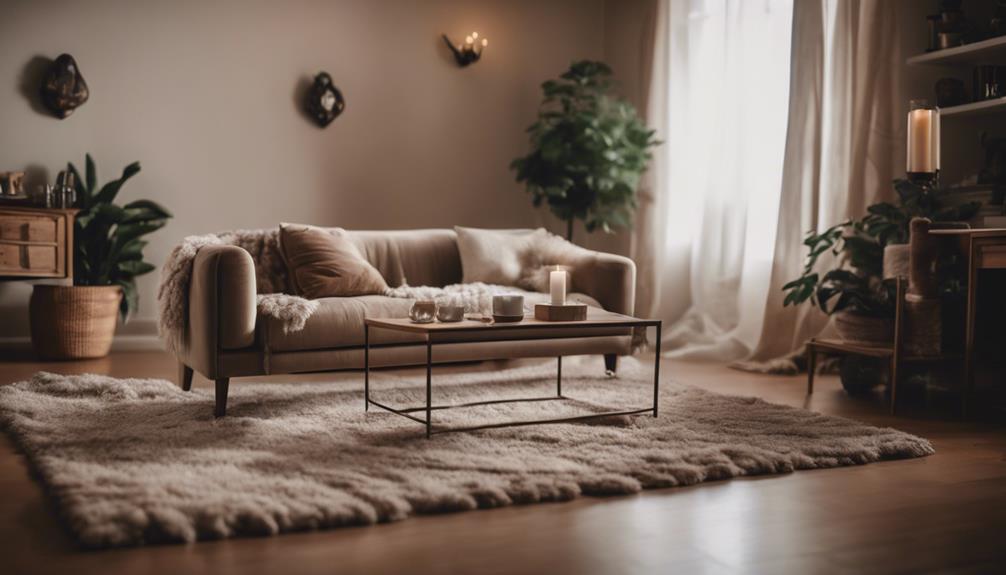
Incorporating luscious neutral textures into home decor elevates the ambiance by infusing richness and comfort through luxurious fabrics and finishes. These neutral textures, such as plush fabrics like velvet and soft linens, create a cozy and inviting atmosphere. Warm hues like taupes, grays, and creamy whites bring a sense of calm and sophistication to the decor, allowing other design elements to stand out.
The trend towards luscious neutral textures emphasizes the use of subtle yet alluring tones for a refined and elegant look. By adding depth, warmth, and tactile appeal to living spaces, these textures enhance the overall aesthetic. The focus on essentials in luscious neutral textures provides a luxurious feel while maintaining a sense of comfort and relaxation.
Incorporating these elements into home decor can transform any space into a stylish and welcoming haven.
Sculptural Pendants
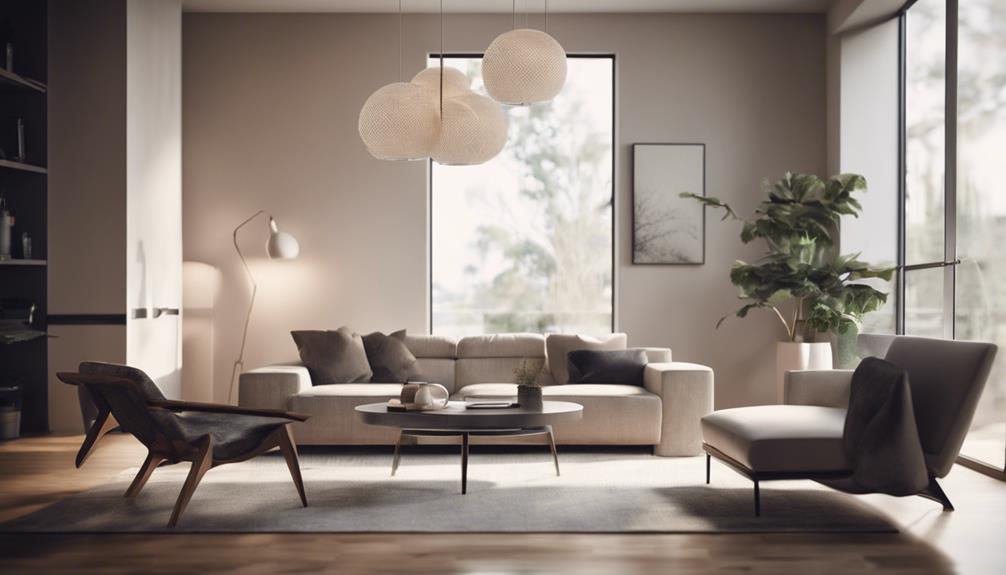
Sculptural pendants are unique lighting fixtures that make a statement in any room, offering modern pendant designs that stand out. These oblong shapes not only provide functional lighting but also serve as decorative pieces, elevating the ambiance with sophistication.
Emphasizing elongated shapes over traditional options, sculptural pendants contribute to a room's overall aesthetic by enhancing its visual appeal.
Unique Lighting Fixtures
A popular trend in home decor right now revolves around unique lighting fixtures known as sculptural pendants, offering a stylish and functional touch to modern interiors. These lighting fixtures feature oblong shapes that are perfect for dining and living rooms, providing warm and flattering light to create a cozy ambiance in any space.
Sculptural pendants serve as both functional and decorative statement pieces, emphasizing unique shapes over color to complement monochrome spaces for a cohesive look. By incorporating long, sculptural pendants, one can add dimension and visual interest to rooms, making them a stylish choice for contemporary interiors.
Statement Piece Lighting
Let's explore how statement piece lighting with sculptural pendants elevates the ambiance of modern interiors. Sculptural pendants, as a form of statement piece lighting, bring both functionality and aesthetic appeal to spaces like dining and living rooms. These oblong-shaped fixtures provide warm and flattering light, creating a cozy atmosphere. Emphasizing shape over color, sculptural pendants enhance monochrome spaces by adding dimension and visual interest. Their versatile nature allows them to act as focal points, highlighting specific areas within a room. The trend of using sculptural pendants in white or neutral tones adds a contemporary and sophisticated touch to interior decor. Integrating these pieces can transform a space, making them a popular choice in contemporary curtain designs.
| Sculptural Pendants as Statement Piece Lighting | |
|---|---|
| Provide warm and flattering light | Enhance monochrome spaces |
| Add elegance and style to the room | Can act as focal points |
| Versatile and functional | Trending in white or neutral tones |
| Create dimension and visual interest | Bring contemporary sophistication |
Modern Pendant Designs
Modern pendant designs featuring long, sleek shapes bring a contemporary flair to dining and living spaces, enhancing both functionality and aesthetics. These sculptural pendants offer warm, flattering light, elevating the room's ambiance as functional and decorative statement pieces.
Emphasizing shape over color, they seamlessly blend into monochrome interiors, creating a cohesive look. Oblong pendant shapes add dimension and visual interest, becoming a focal point with their unique silhouette.
Versatile in design, modern pendant styles can complement a range of interior styles, from minimalist to eclectic, making them a sought-after choice for lighting fixtures in 2024.
Curvaceous Cabinetry Appeal
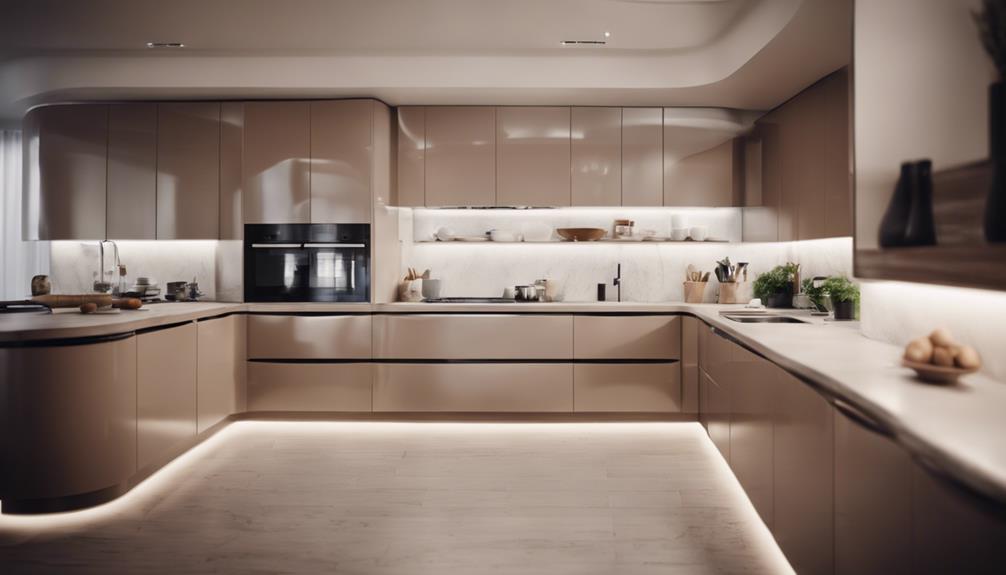
Incorporating curvaceous cabinetry into your home decor brings a touch of elegance and functionality to your living space. This stylish storage solution trend features organic shapes that create inviting spaces. The customizable finishes in curvaceous cabinetry allow for individuality in design, making it a versatile choice for various home styles. Inspired by the curved sofa trends of the 1950s, curvaceous cabinetry combines comfort with refinement, adding a unique touch to your interiors.
The plumped-up seating in curvaceous cabinetry offers a blend of comfort and style in relaxed designs, perfect for those looking to create a cozy and chic atmosphere in their homes. Whether you prefer a more traditional or modern aesthetic, curvaceous cabinetry can be tailored to suit your taste, making it a popular choice among homeowners seeking a balance of sophistication and functionality in their living spaces.
Glass Brick Resurgence
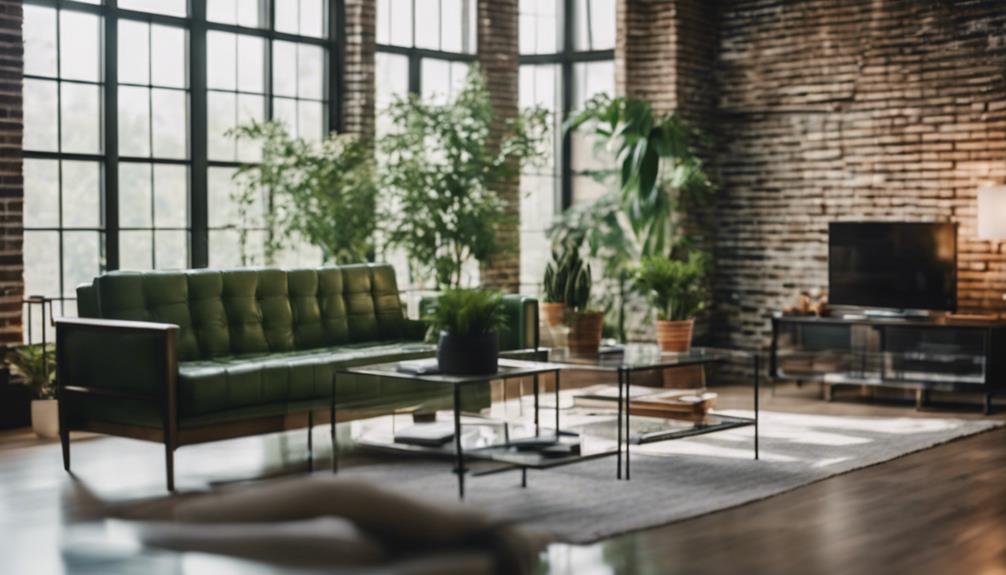
The resurgence of colored glass brick designs in home decor is adding impact and personality to spaces, emphasizing architectural considerations. These glass bricks are experiencing a retro trend comeback, bringing a touch of nostalgia and a modern twist to interior design. To showcase the significance of this trend, we recommend consulting with professionals for best integration, guaranteeing a seamless blend with your existing decor.
—
| Glass Brick Resurgence | Architectural Considerations | Burled Wood |
|---|---|---|
| Adds impact and personality | Emphasizes architectural features | Unique grain patterns |
| Retro trend comeback | Enhances design aesthetics | Nostalgic appeal |
| Modern twist on traditional look | Creates visual interest | Craftsmanship and charm |
| Versatile applications in decor | Consultation with professionals recommended | Innovative design elements |
| Adds a touch of elegance | Ensures seamless integration | Craftsmanship and charm |
Burled Wood Accents
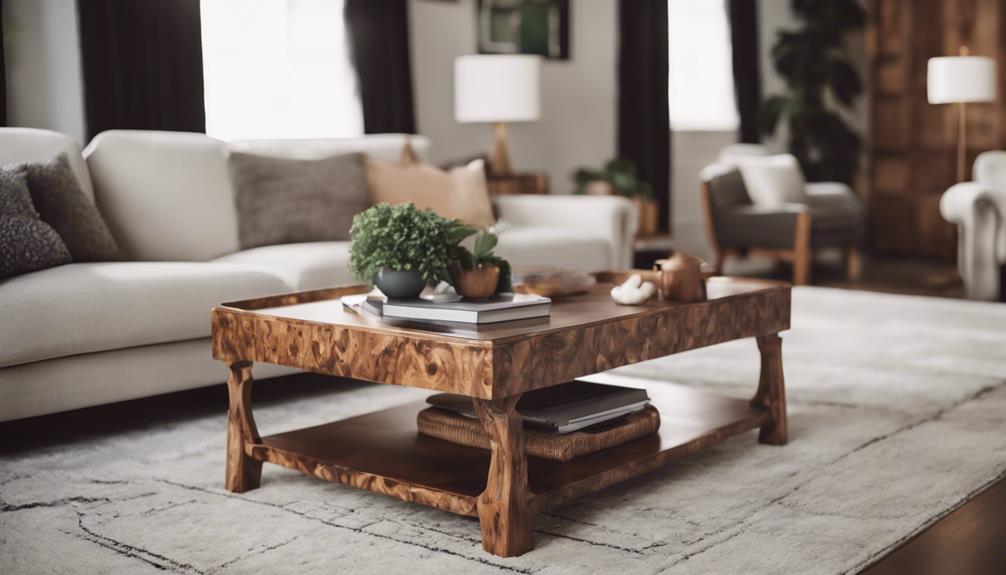
Burled wood accents exude a timeless charm with their unique grain patterns, infusing spaces with a sense of organic warmth and character. These accents are a key component of current home decor trends, aligning perfectly with the growing emphasis on incorporating natural elements into interior design. By harnessing the beauty of burled wood, spaces are elevated with a touch of nostalgia and craftsmanship.
One of the remarkable features of burled wood accents is their ability to interact with natural light, creating a dynamic visual experience within a room. The interplay between the intricate grain patterns of burled wood and the gentle flow of natural light can transform a space, adding depth and enhancing its overall ambiance.
Anticipated innovative applications of burled wood accents further highlight their versatility and timeless appeal in modern decor. Whether used as statement furniture pieces or subtle decorative elements, burled wood accents have the power to enrich the aesthetic of interiors by bringing in elements of nature and infusing spaces with character and visual interest.
Zellige Tiles Comeback
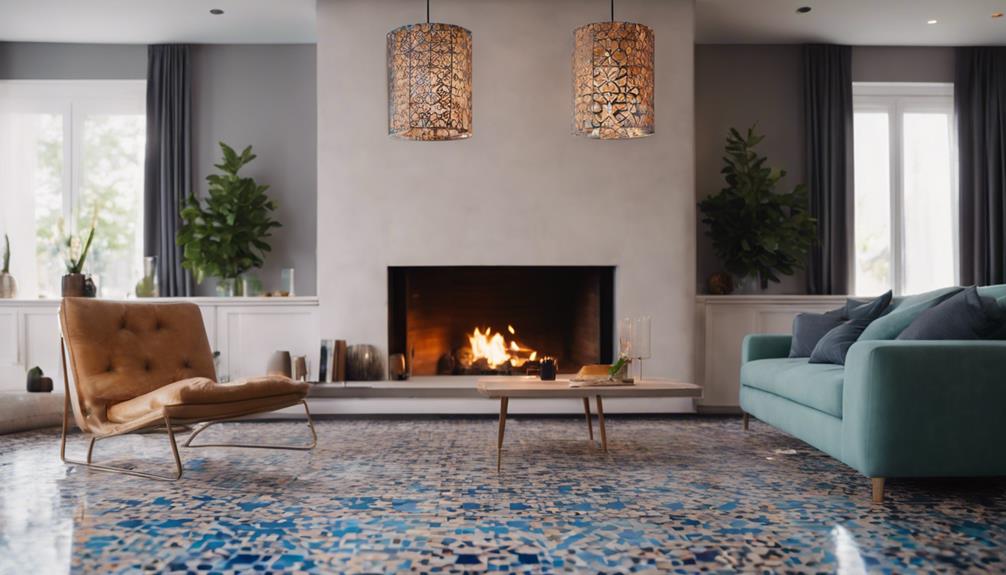
Embracing a resurgence in home decor, Zellige tiles make a striking comeback with their hand-crafted allure and versatile design options. These tiles are renowned for their depth, texture, and unique imperfections, adding a touch of subdued glamour and sophistication to any interior they grace. Available in a wide array of colors and shapes, Zellige tiles offer endless possibilities for incorporating them into various design styles, be it traditional or modern.
Key Points:
- Zellige tiles are hand-crafted, showcasing depth and texture.
- They come in a versatile range of colors and shapes.
- Zellige tiles add sophistication to interiors, blending seamlessly with different design styles.
- Designers are increasingly using Zellige tiles to bring character and warmth to walls, backsplashes, and other surfaces in homes.
Functional Elegance Trends
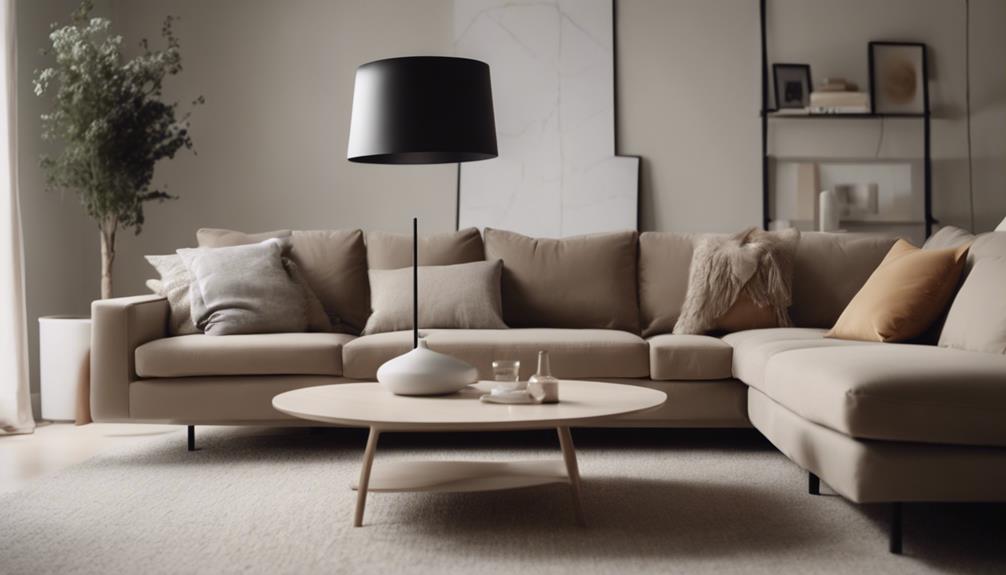
Pivoting from the resurgence of Zellige tiles, we now explore the latest trend in home decor – Functional Elegance Trends. Interior designers are incorporating pleated upholstery details on furniture to add a touch of timeless elegance and a twist on traditional style. Sustainable flooring is gaining popularity with materials like wool, reclaimed plastics, and recycled polyester, appealing to eco-conscious decor enthusiasts. Strategic placement of mirrors in rooms creates an illusion of expanded space and adds depth to the overall design. Implementing pegboard in kitchens offers both function and aesthetic appeal, providing nostalgic charm and visually appealing storage solutions. Bold colors are making a statement in home decor, with painting portions of walls with vibrant hues or unique finishes to create visual interest, modernize the space, and serve as a focal point in the room.
| Trending in Functional Elegance | |
|---|---|
| Pleated Upholstery Details | Timeless Elegance |
| Sustainable Flooring Materials | Eco-conscious Choices |
| Bold Colors on Walls | Visual Interest and Modernization |
Frequently Asked Questions
What Home Decor Is Popular Right Now?
We see a shift towards earthy tones like clay, foliage, and terracotta in current home decor trends. Deep forest greens and sunset shades, with rich browns, oranges, and reds, are gaining popularity. Yellow hues for optimism and energy, along with calming blue tones, are prominent choices.
Sunset shades are recommended for creating comfort and joy in living spaces. Additionally, a seventies revival with retro-inspired interiors and saturated colors is making a comeback.
What Is the Most Sold Home Decor?
We see oversized sectionals from brands like Pottery Barn and Burrow flying off the shelves. People are loving the bold statement made by square tiles, especially the 4-inch ones for backsplashes or bathroom walls.
Chrome hardware like the Amerock St. Vincent Pull and Ashley Norton Hex Pull is making a strong comeback. And let's not forget the demand for oversized accessories, such as the Anthropologie Gleaming Primrose mirror, to add flair to home decor.
What Decor Will Be Popular in 2024?
In 2024, popular home decor trends include a shift towards neutrals, warmer hues, saturated cabinet colors, classic details, and a show of restraint in design. Earthy tones like clay, foliage, and terracotta are gaining popularity.
Retro styles, nature-inspired shapes, curved silhouettes, and rattan furniture remain prevalent. Unusual angles, rounded shapes, tactile fabrics, scalloped details, and natural materials are accentuated for added character and style.
Sunset shades, seventies revival, and dark maximalism are also making a comeback.
What Style Decor Is Most Popular?
We see a variety of decor trends emerging this year. Bold marble with dramatic veining is gaining popularity, adding a touch of maximalism to spaces.
Additionally, 70s style decor is making a strong comeback with vintage hues and unique elements like wall-to-wall carpeting.
Chrome hardware is also on-trend, dominating showrooms with its sleek look.
Square tiles are replacing subway tiles, and oversized accessories are becoming statement pieces in home decor.
Conclusion
To sum up, home decor trends are constantly evolving, blending retro elements with modern touches to create a harmonious fusion. From bold wall murals to luscious neutral textures, there's a diverse range of options to choose from.
Incorporating sculptural pendants and burled wood accents can add a touch of elegance to any space. So, whether you're a fan of glass brick or zellige tiles, there's something for everyone to elevate their home decor game and make a lasting impression.
Wall Art and Decor
How Much Cost Paint Interior House
Hovering over the potential costs of painting the interior of your house? Find out why factors like materials, labor, and quality play a crucial role in determining the final price.
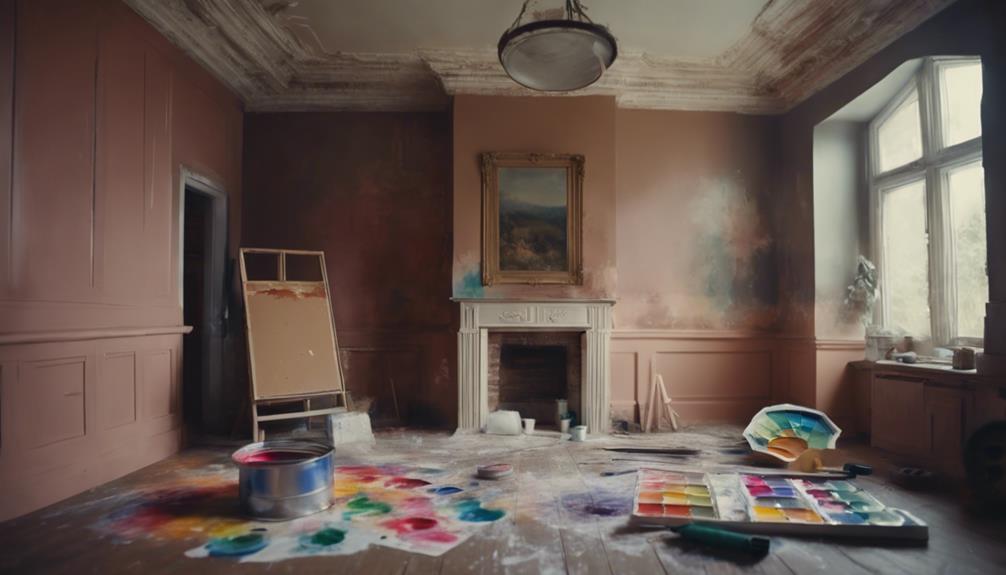
To paint the interior of your home, the average cost is $2.75 per square foot. If you include walls, trim, and ceilings, it may rise to about $4.69 per square foot. Factors like room height and needed repairs impact the final cost. Materials like paint range from $15 to $60 per gallon. Labor costs vary from $20 to $50 per hour. Different paint types and quality levels affect pricing. Remember, obtaining multiple quotes can aid in comparing costs effectively. Understanding these elements will help you make informed decisions about painting expenses.
Key Takeaways
- Average cost: Interior painting averages $2.75 per sq ft.
- Cost factors: Factors include materials, labor, and repairs.
- Labor expenses: Labor costs vary based on skill and complexity.
- DIY option: DIY painting can save on labor costs.
- Material costs: Quality paints range from $15 to $60 per gallon.
Interior Painting Costs Overview
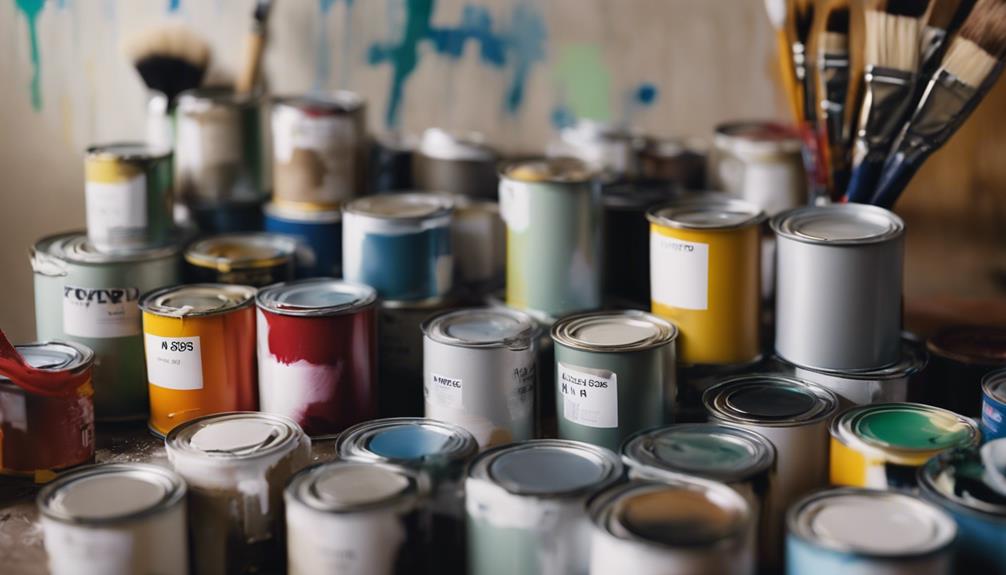
When considering the cost of painting the interior of your house, it's important to understand the factors that contribute to the overall expenses. The average cost of interior painting is approximately $2.75 per square foot.
However, if you include painting walls, trim, and ceilings, this average can rise to around $4.69 per square foot. Factors such as the height of the room and ease of access can affect the overall cost of the interior painting job.
Labor rates, materials used, and the size of your home are key elements that influence the total cost of the project. It's worth noting that opting for off-season painting, typically between November and February, can potentially save you money on your interior painting project.
Cost Factors for Interior Painting
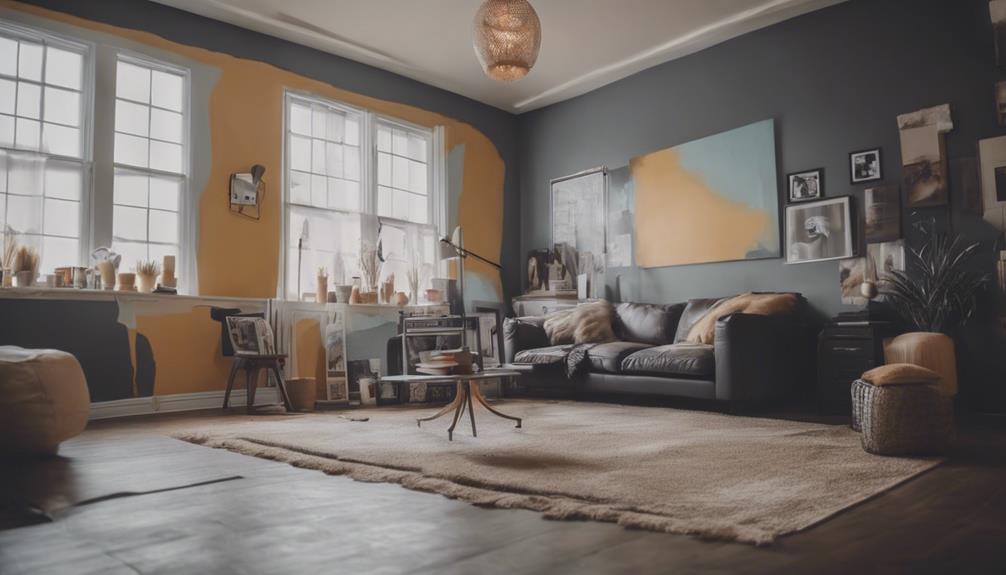
When calculating the cost of painting the interior of your house, it's important to take into account the breakdown of material expenses, estimate labor costs, and determine your total project budget. Material costs include paints, primers, brushes, and other supplies, while labor expenses cover the payment for professional painters who'll complete the job.
Material Costs Breakdown
To break down the material costs for interior painting, consider the varying prices of paint types ranging from $15 to $60 per gallon based on quality and type. Different paint options like oil-based, water-based, and latex come with different price points. When calculating paint costs, take into account the coverage area and the number of coats required for the job.
Additionally, equipment and supplies such as brushes, rollers, paint trays, and tools can range from $3 to $300, impacting the overall expenses. Opting for quality materials and excellent craftsmanship may incur higher costs but can result in a more durable and aesthetically pleasing finish.
Choose the paint type and materials that align with your budget and desired outcome for your interior painting project.
Labor Expenses Estimation
Taking into account the significance of labor expenses in interior painting projects, it's crucial to factor in the typical range of labor costs, which usually fall between $20 to $50 per hour. Professional painters determine charges based on square footage or linear foot, especially for features like high ceilings.
Factors such as project complexity and wall repair can also impact labor costs. To guarantee you get the best deal, obtaining multiple quotes from professional painters is recommended. This allows you to compare labor expenses effectively.
Total Project Budget
For an interior painting project, understanding the total project budget involves carefully evaluating the various cost factors at play. To determine the total project cost, consider:
- Cost per Square Foot: Interior house painting typically ranges from $3 to $7 per square foot, depending on factors like project size and paint quality.
- Labor Costs: Labor expenses vary from $20 to $50 per hour, impacting the overall budget greatly; hiring a professional painter can guarantee quality results.
- Multiple Quotes: Obtaining quotes from different painters for comparison is advisable to make cost-effective choices and ensure fair pricing for your interior painting project. Remember, investing in quality paint is important for a successful outcome.
Painting Costs by Square Footage
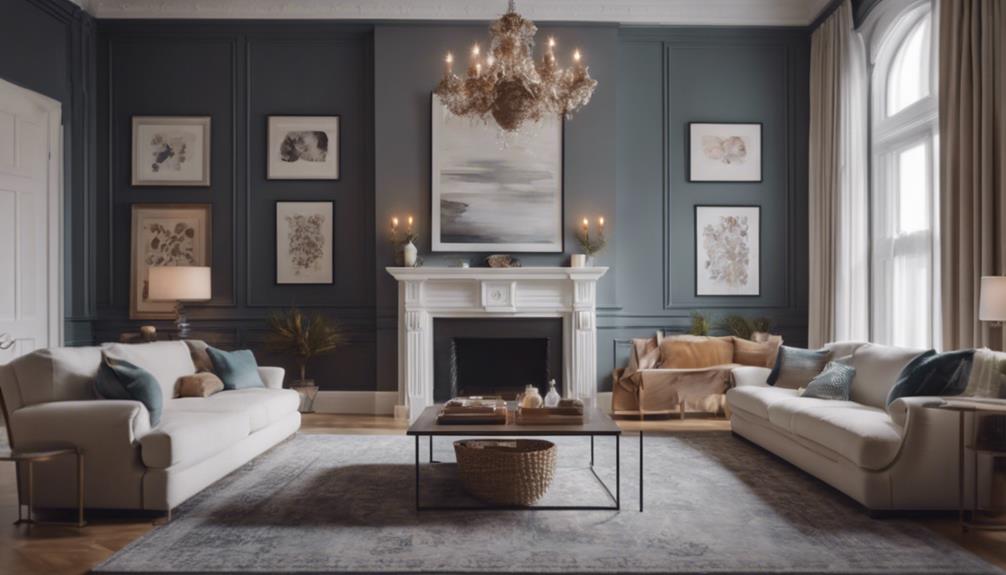
When estimating painting costs based on square footage, consider the average rate of $2.75 per square foot for interior house painting. This price per square foot can vary based on factors such as room height, the inclusion of trim and ceilings, market variations, and the size of the home.
Factors like room height, ease of access, and necessary repairs before painting can also influence the total cost. Including walls, trim, and ceilings in the painting project can increase the cost to $4.69 per square foot. Market variations exist between different regions, affecting the overall price for interior house painting.
Factors such as home size, layout, and wall height play a significant role in determining the cost of painting per square foot. Keep these factors in mind when planning your interior painting project to establish an accurate budget.
Labor Expenses for Interior Painting
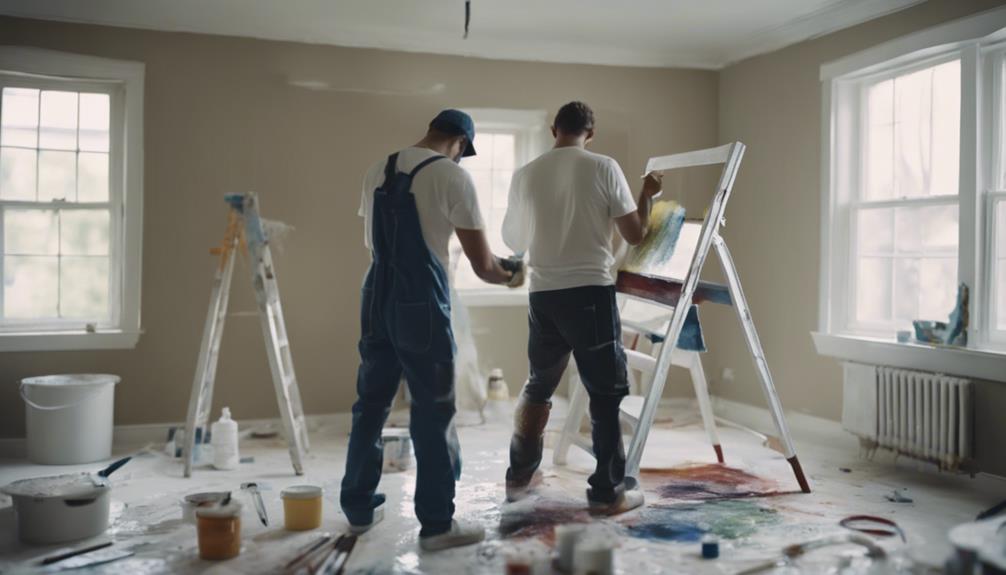
Labor costs for interior painting can vary based on the painter's skill level, impacting the overall pricing of the project.
The time required for completion also plays a significant role in determining labor expenses for interior painting jobs.
Factors like complexity, detailing, and the need for multiple coats can influence the final cost.
Skill Level Affects Costs
Skill level greatly influences the costs of interior painting, with labor expenses varying based on the painter's expertise. When considering hiring a painter for your interior project, keep in mind the following:
- Efficiency: Highly skilled painters work more efficiently, potentially reducing the total hours needed for the project.
- Quality: Experienced painters deliver a professional finish with attention to detail, ensuring a high-quality result.
- Upfront Cost: While skilled professionals may charge higher rates initially, the investment often pays off in the form of a polished and lasting interior paint job.
Choosing a painter with the right skill level can impact both the outcome of the project and the overall cost involved.
Time Required Influences Pricing
The total labor expenses for interior painting are greatly influenced by the time required to complete various painting tasks. Labor costs typically range from $20 to $50 per hour, depending on the complexity of the project and the intricacy of the details involved.
More complex projects or those with intricate details may require additional time, thereby increasing the total expenses. The efficiency and experience of painters also play an important role in determining the overall labor costs. Experienced painters can often complete tasks more quickly and effectively, potentially reducing the total time needed for the job.
Proper planning and organization are essential to minimize labor expenses for interior painting projects.
DIY Interior Painting Cost Breakdown
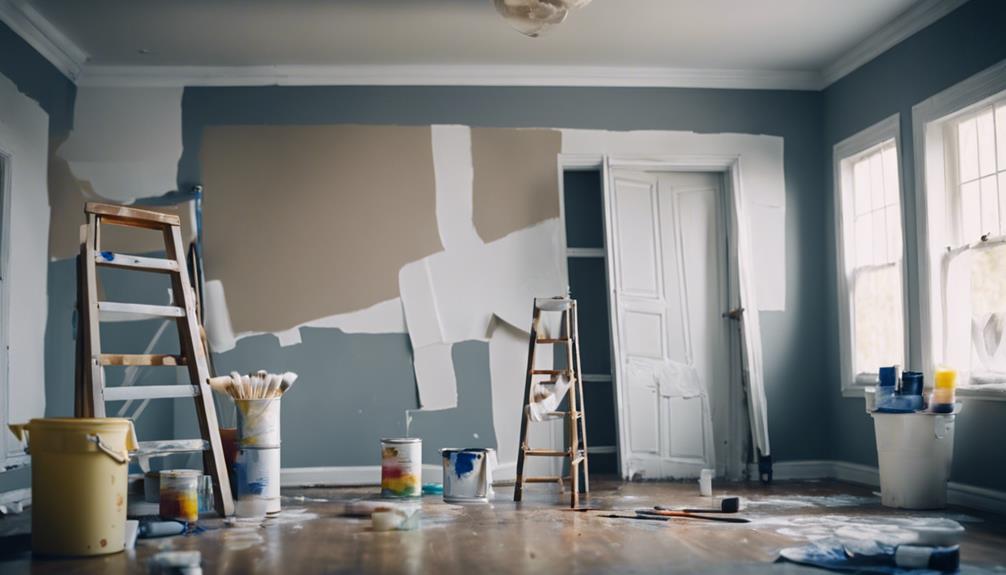
Exploring the breakdown of costs for DIY interior painting can provide valuable insights for budget-conscious homeowners. To help you understand the expenses involved in painting your home, here is a cost breakdown:
- Materials: Purchasing items like high-quality paint, primer, rollers, brushes, painters tape, and drop cloths is essential. These materials typically cost between $100 and $150.
- Prep Work: Tasks such as filling holes, sanding surfaces, and applying painters tape are important for achieving a professional finish. Budget around $50 for these prep work materials.
- Labor Costs: Since you're doing the painting yourself, you'll save on labor expenses. However, keep in mind that dedicating time and effort to the project is valuable, and the cost regarding time shouldn't be overlooked.
Interior Paint Material Costs
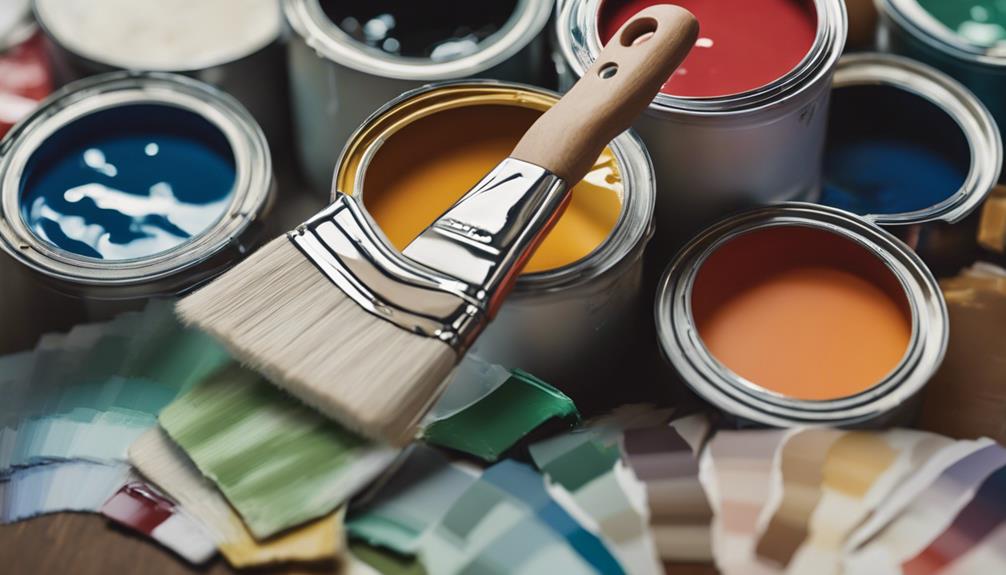
When painting the interior of your house, the cost of materials plays a significant role in your overall budget. Interior paint costs can range from $15 to $60 per gallon, depending on the quality and brand you choose. Opting for higher quality paints typically falls within the $30 to $60 per gallon range. Calculating paint costs involves considering factors such as coverage area and the number of coats needed to achieve the desired finish.
Different types of paint, including oil-based, water-based, and latex, come at varying price points, affecting your material costs. In addition to paint, you must also account for paint supplies like brushes, rollers, trays, and tools, which can range from $3 to $300, further contributing to the overall expenses of your interior paint job. Choose your paint colors wisely and take into consideration the quality of the paint brands to ensure a satisfactory outcome.
Additional Factors Affecting Costs
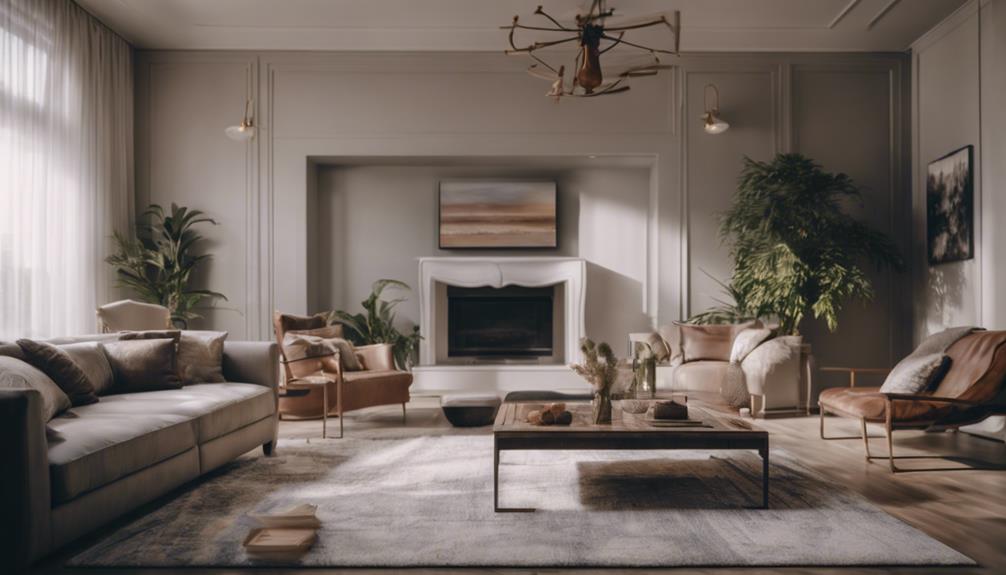
Considering the various factors influencing the cost of painting the interior of your house, it's important to also address additional elements that can impact your overall expenses. Here are some key factors to keep in mind:
- Labor Rates: Labor rates typically range from $20 to $50 per hour, so the amount you spend on labor can greatly affect your total expenses.
- High Ceilings, Wall Repair, and Accent Walls: Factors like high ceilings, extensive wall repair, or the addition of accent walls can increase your interior painting costs due to the extra time and materials required.
- Size of the Home and Materials Used: The size of your home, along with the materials used such as paint quality and finishes, play an important role in determining the overall price of the project. Additionally, local market rates for labor and materials can vary, impacting the total cost of painting your house's interior.
Be mindful of these factors to better estimate your interior painting expenses.
Cost Considerations by Housing Type
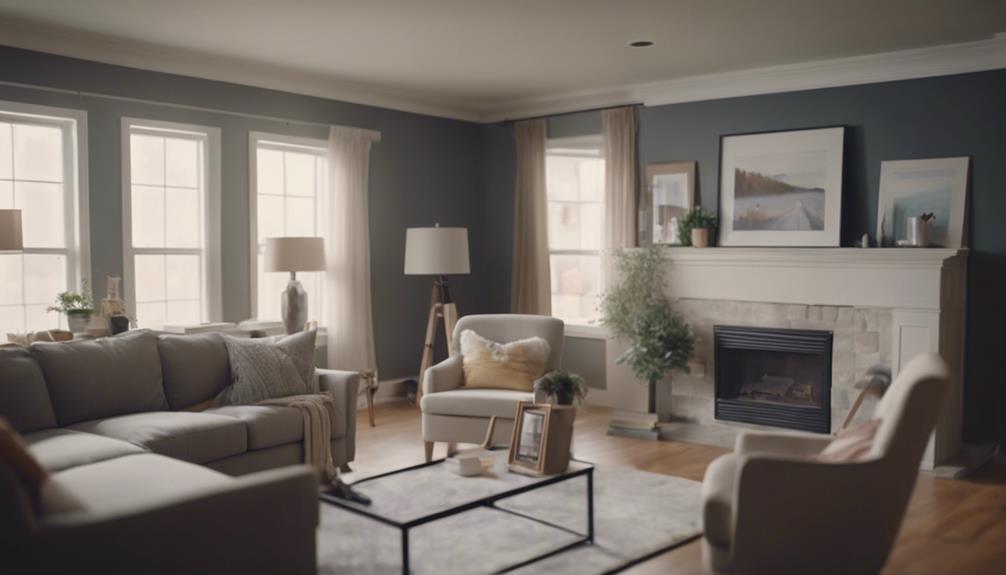
The cost considerations for different housing types when painting their interiors vary greatly. When painting an apartment, the cost typically ranges from $2,150 to $4,600. For a condo, you can expect to pay between $2,400 and $5,800.
Common areas in buildings like hallways or lobbies may have varying costs depending on their size. Specific rooms such as bedrooms, living rooms, bathrooms, and kitchens may also incur different painting costs. When painting interior surfaces like walls, ceilings, trim, and interior doors, there are specific cost considerations to keep in mind.
Older houses might require more preparation work, potentially increasing the overall cost. To get a rough estimate of how much should it cost to paint the interior of a house, consider factors like the size of the area, the quality of the paint product, and whether you hire professional house painters.
Cost-Saving Strategies for Interior Painting
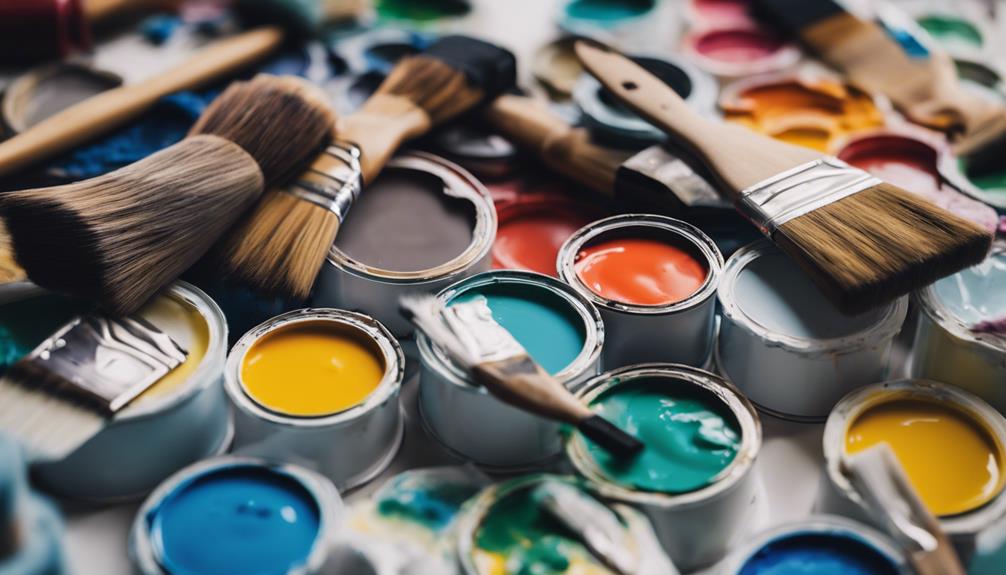
To save costs on interior painting, explore utilizing off-season painting times and opting for low-VOC or No-VOC paint products to reduce harmful fumes. Here are three cost-saving strategies to contemplate when painting the interior of your home:
- Choose Off-Season Painting: Painting during off-peak months like November to February can lead to cost savings due to lower demand for painters.
- Opt for Low-VOC Paint: Selecting paint with low-VOC or No-VOC levels can't only be eco-friendly but also reduce the unpleasant odors often associated with painting.
- DIY vs. Hiring a Professional: Ponder whether you have the skills and time to paint yourself, as DIY projects can save you money compared to hiring a professional.
Frequently Asked Questions
How Much Should I Charge to Paint the Inside of a House?
When determining how much to charge for painting the inside of a house, take into account factors like the size of the rooms, layout, and any additional repairs needed. Room dimensions, wall height, and complexity affect costs. Professional painters typically charge per square foot or linear foot for walls, ceilings, trim, and doors.
Quality of paint, labor rates, and project intricacy also impact pricing. Make sure your rates cover materials, labor, and any extra expenses for a detailed quote.
How Much Paint to Paint the Interior of a 2000 Square Foot House?
To paint the interior of a 2000 square foot house, you might need around 8-10 gallons of paint for walls only. Including ceilings and trim could increase this to 15-20 gallons. Factors like paint quality, surface texture, and colors can affect the amount needed.
High ceilings or extra rooms may also increase the total required paint. Calculating accurately helps in budgeting for your project.
How Much Does It Cost to Paint a 12X12 Room?
To paint a 12×12 room, you can expect to pay between $300 and $800, depending on factors like paint quality and additional services. This cost covers labor, materials, and prep work such as cleaning, sanding, and priming.
Prices may vary by location, with urban areas typically being more expensive. Adding trim, ceilings, or accent walls can bump up the total cost. Consider getting quotes from different painters to find the best deal.
How Much Does It Cost to Paint a 400 Square Foot House Interior?
To paint a 400 square foot house interior, consider factors like paint quality, prep work, and labor rates. Prices may vary based on room count, ceilings, and trim. DIY painting can save money, but experts guarantee quality. Get multiple quotes to find the best price. Costs range from $1,100 to $2,800.
Hiring professionals guarantees a professional finish, while doing it yourself can cut expenses, but may require more effort and time.
Conclusion
To sum up, understanding the cost of painting the interior of your house is essential for budget planning. Factors like square footage, labor, materials, and housing type all play a role in determining the overall cost.
By grasping these cost factors and considering DIY options or cost-saving strategies, you can better prepare for your interior painting project.
Remember, a well-informed approach can help you achieve the desired look for your home without breaking the bank.
Mason – Your Product Expert Mason is your go-to product expert, carefully selecting each item in our collection to ensure it meets your comfort, functionality, and style needs. With his attention to detail and commitment to quality, he ensures that every product we offer enhances your home experience.
-

 Vetted8 months ago
Vetted8 months ago15 Best EMS Foot Massagers for Neuropathy to Soothe Your Feet
-

 Vetted7 months ago
Vetted7 months ago14 Best Personalized Father's Day Gifts for Your Husband – Show Him You Care
-

 Alfresco7 months ago
Alfresco7 months agoAlfresco Stacker Doors: Seamless Indoor-Outdoor Living!
-

 Tableware and Dining Accessories2 weeks ago
Tableware and Dining Accessories2 weeks agoWhat Is the Meaning of the Word Tableware
-
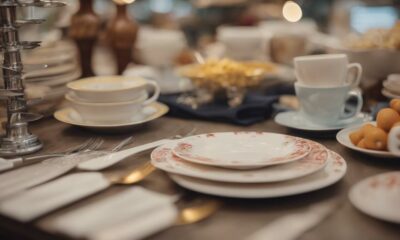
 Tableware and Dining Accessories2 weeks ago
Tableware and Dining Accessories2 weeks agoWhen Is Tableware on Sale at Hobby Lobby
-
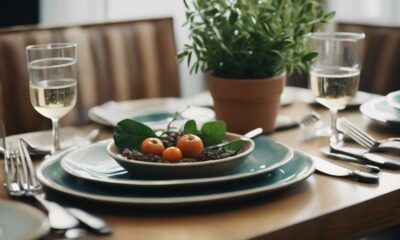
 Tableware and Dining Accessories2 weeks ago
Tableware and Dining Accessories2 weeks agoWhich of the Following Is Not Classified as Tableware
-

 Vetted49 minutes ago
Vetted49 minutes ago15 Best Detergents for Wool: Keep Your Woolens Looking Fresh and Fabulous
-

 Craft and Textiles2 days ago
Craft and Textiles2 days ago15 Best Places to Buy Appliances for Your Home – Top Retailers Reviewed










